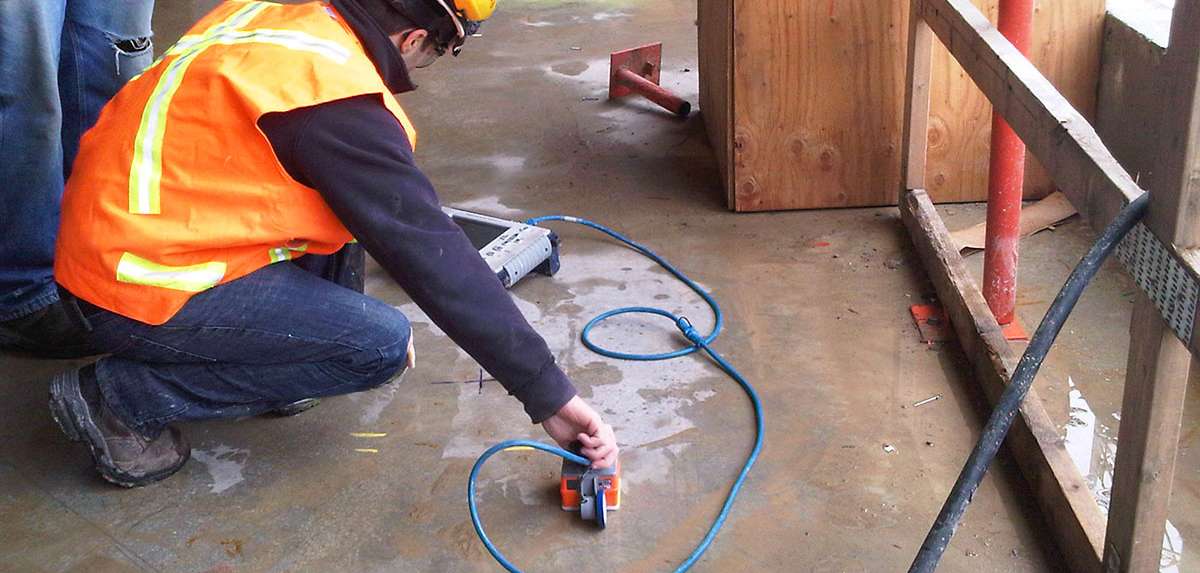Expert Tips for Ideal Concrete Scanning Outcomes
Expert Tips for Ideal Concrete Scanning Outcomes
Blog Article
Beyond the Surface: Leveraging Advanced Concrete Scanning Techniques for Unmatched Precision and Insight
In the realm of building and construction and infrastructure maintenance, the pursuit for precision and thoroughness is unending. Advanced concrete scanning techniques have actually become important tools in this search, supplying a peek below the surface area to reveal a globe of critical insights. By taking advantage of sophisticated modern technologies, professionals can reveal abnormalities, evaluate the condition of concrete frameworks, and make informed choices that shape the course of projects. The ramifications of these methods prolong much past mere surface-level analyses, promising a deepness of accuracy and understanding that is unrivaled.
Significance of Advanced Concrete Scanning
The importance of making use of advanced concrete scanning techniques lies in the unequaled accuracy they provide for identifying sub-surface abnormalities and ensuring architectural honesty. By employing sophisticated modern technologies such as ground-penetrating radar (GPR), electro-magnetic induction, and advanced sonar imaging, building and construction professionals can delve underneath the surface of concrete frameworks with a degree of accuracy that much goes beyond standard assessment approaches. Concrete Scanning. These methods make it possible for the recognition of covert risks like rebar rust, voids, avenues, or post-tension cables that could jeopardize the security and safety and security of a framework over time
In addition, progressed concrete scanning provides vital insights into the overall problem of a concrete component without the demand for intrusive procedures, minimizing the risk of causing damages during the evaluation process. The capacity to identify the specific location and deepness of prospective concerns permits targeted repairs and maintenance, ultimately prolonging the lifespan of the framework and maximizing its performance. In essence, the importance of sophisticated concrete scanning can not be overstated in the world of construction and facilities maintenance, where precision and reliability are critical.
Sorts Of Cutting-Edge Technologies

Abnormalities and Flaw Detection

Along with GPR, concrete scanning methods like thermography and impact-echo testing are additionally reliable in identifying problems and abnormalities. Thermography makes use of infrared innovation to identify variants in surface temperature level, suggesting potential locations of issue such as delamination or dampness access. On the various other hand, impact-echo testing entails evaluating acoustic reactions to find voids, cracks, and other flaws within the concrete. By leveraging these innovative strategies, experts More about the author can proactively resolve structural problems, making certain the durability and safety of concrete structures.
Assessing Concrete Condition
How can engineers accurately evaluate the condition of concrete frameworks to guarantee their longevity and security? Evaluating the concrete problem is an essential aspect of preserving infrastructure honesty. Numerous sophisticated concrete scanning methods are used for this objective. Ground-penetrating radar (GPR) is frequently made use of to examine the internal structure of concrete, identifying gaps, fractures, and various other abnormalities that may jeopardize its strength. Furthermore, impact-echo testing can provide insights right into the density and honesty of concrete aspects. Ultrasonic pulse velocity screening is an additional useful method for reviewing concrete high quality by determining the speed of audio waves with the material.
In addition, aesthetic inspection remains an essential part of concrete problem analysis. Engineers visually analyze the surface for indicators of deterioration, such as spalling, breaking, or discoloration. Incorporating non-destructive testing approaches with aesthetic evaluations permits a comprehensive analysis of concrete condition, making it possible for designers to recognize prospective concerns at an early stage and implement timely upkeep or repair work. By leveraging these sophisticated methods, designers can make certain the lasting resilience and safety of concrete frameworks.
Enhancing Decision-Making Processes
In the world of facilities administration, maximizing decision-making procedures is vital for guaranteeing the reliable maintenance and long life of concrete frameworks. Boosted decision-making processes in concrete monitoring include utilizing advanced scanning techniques to gather in-depth information on the problem of frameworks. By leveraging innovations such as ground-penetrating radar and 3D imaging, stakeholders can make enlightened choices relating to fixing, substitute, or reinforcement techniques.
These progressed scanning strategies supply very useful insights into the internal make-up of concrete, identifying possible issues such as gaps, fractures, or deterioration that may not be visible externally. This level of in-depth details enables proactive maintenance planning, decreasing the threat of architectural failings and boosting the general life-span of concrete frameworks.
Furthermore, by you could try here incorporating electronic paperwork and analysis devices right into the decision-making procedure, stakeholders can track the development of concrete problems with time, enabling anticipating upkeep methods and maximizing source allocation. Ultimately, the assimilation of advanced concrete scanning methods enhances decision-making procedures by supplying unmatched accuracy, understanding, and effectiveness in framework monitoring.
Conclusion
Finally, progressed concrete scanning strategies offer exceptional accuracy and understanding in identifying anomalies, problems, and examining the problem of concrete frameworks. By leveraging cutting-edge technologies, decision-making processes can be enhanced, resulting in more informed and effective services for maintaining and fixing concrete facilities. These strategies play an essential function in making sure the safety and security and long life of concrete frameworks, making them a crucial tool in the field of construction and design.
In addition, advanced concrete scanning provides invaluable understandings into the overall condition of a concrete element without the need for invasive actions, reducing the risk of triggering damages throughout the evaluation procedure - Concrete Scanning. An additional ingenious modern technology is 3D X-ray scanning, which gives in-depth photos of the internal framework of concrete, using important info without the need for destructive testing. Additionally, Concrete Cover Meters are made use of to gauge the thickness of concrete cover over support bars accurately. Improved decision-making procedures in concrete administration involve utilizing innovative scanning techniques to gather comprehensive data on the problem of structures.In verdict, advanced concrete scanning methods use unequaled accuracy and insight in finding anomalies, issues, and evaluating the condition of concrete frameworks
Report this page